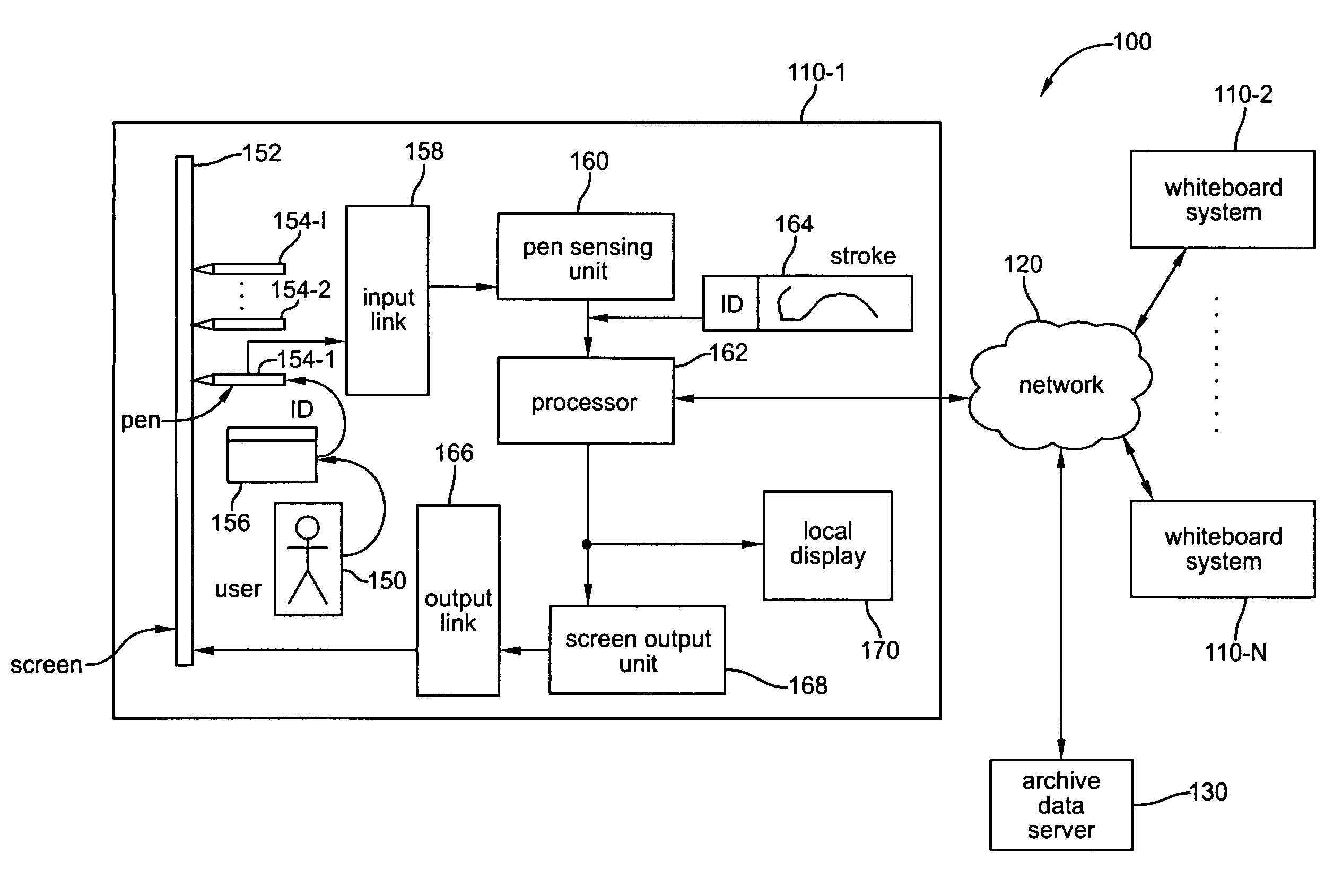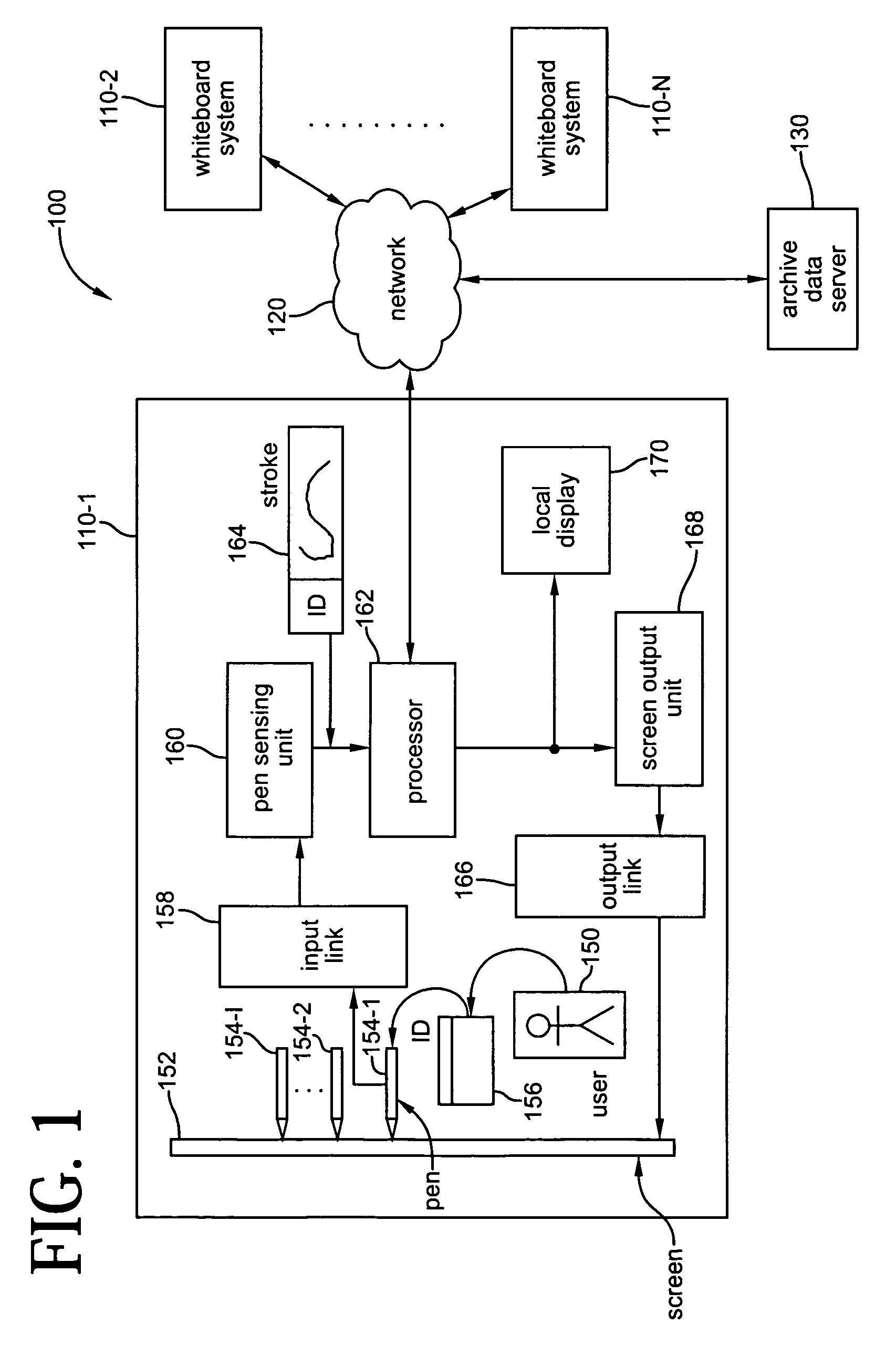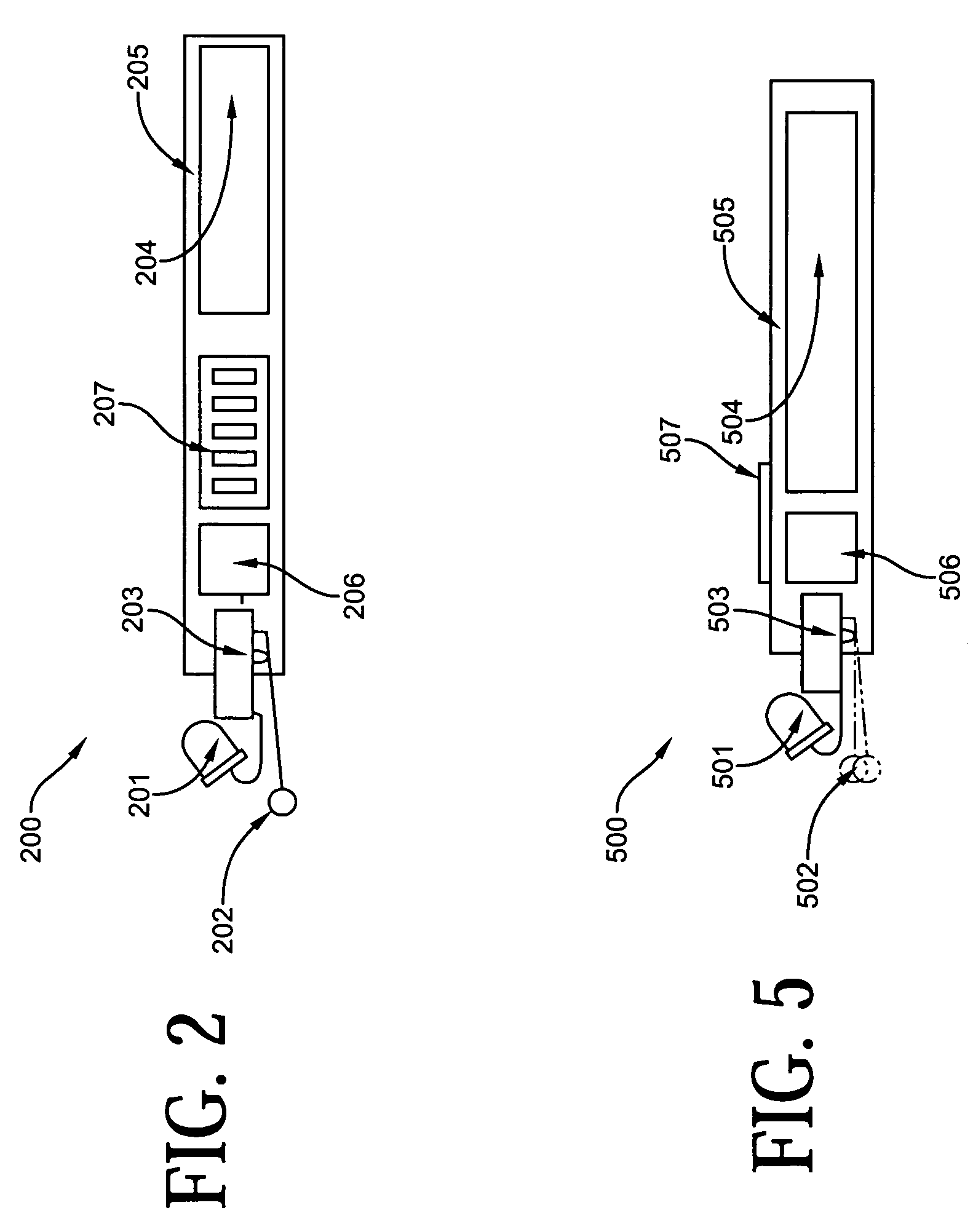Methods and apparatus for associating a user with content in a collaborative whiteboard system
a technology of collaborative whiteboard and user, applied in the field of collaborative application computing system, can solve the problems of pen strokes, no way to distinguish individual contributors of data at a particular location, no way to impart identity or ownership of whiteboard data
- Summary
- Abstract
- Description
- Claims
- Application Information
AI Technical Summary
Problems solved by technology
Method used
Image
Examples
first embodiment
[0038]In accordance with a first embodiment, user identification is achieved by virtue of the input device (pen) that each participant uses. Thus, there is one pen per user in the system. The user actively attaches his / her identity to the pen, for example, in this embodiment, via switch settings on the pen. The user identity is now an attribute of the pen, which transmits a unique code to the collaborative system with each AWU or stroke. Preserving identity precludes sharing of input devices. The ability of the pen sensing unit to discriminate among pen identities allows simultaneous input. It is the responsibility of each processor in the system to report strokes to a server which maintains the state and archive of the whiteboard. The strokes received by the server have unique user ID's associated with them.
[0039]FIG. 2 is a block diagram illustrating a light pen for use in implementing user identification in a whiteboard system according to such a first embodiment of the present i...
second embodiment
[0043]In accordance with a second embodiment, each user transmits his / her identity to the pen by virtue of holding the pen. This embodiment makes use of a technology referred to as “personal area networks” (PANs). As is known, PAN technology, developed at IBM Corporation's Almaden Research Center (San Jose, Calif.), uses the natural electrical conductivity of the human body to transmit electronic data. Using a small transmitter embedded with a microchip, and a slightly larger receiving device, users can transmit, for example, a pre-programmed electronic business card between themselves via a simple handshake. PAN generally works based on the following principles. The natural salinity of the human body makes it an excellent conductor of electrical current. PAN technology takes advantage of this conductivity by creating an external electric field that passes a tiny current through the body, over which is carried the data to be exchanged. The current used is one-billionth of an amp (on...
fourth embodiment
[0047]In accordance with a fourth embodiment, the user's identification is inferred from the physical dynamics of handwriting after the data is contributed, as is done in signature verification and / or handwriting analysis. This is also passive identification. Such an embodiment is illustrated in FIG. 6. As shown, the user merely uses any one of the pens 154-1 through 154-I and his / her handwriting is analyzed in accordance with a handwriting analysis (HW) module 600 in the processor running a conventional handwriting analysis algorithm. While it is known that considerable processing power may be required to implement this embodiment, it has the advantage that all contributors can share a single input device. Further, the success of identification may be improved by using the writing dynamics of the user. If the temporal evolution of the stroke's quantized points is known, then the spectral characteristics of the stroke may be used to identify the user.
[0048]It is to be appreciated th...
PUM
 Login to View More
Login to View More Abstract
Description
Claims
Application Information
 Login to View More
Login to View More - R&D
- Intellectual Property
- Life Sciences
- Materials
- Tech Scout
- Unparalleled Data Quality
- Higher Quality Content
- 60% Fewer Hallucinations
Browse by: Latest US Patents, China's latest patents, Technical Efficacy Thesaurus, Application Domain, Technology Topic, Popular Technical Reports.
© 2025 PatSnap. All rights reserved.Legal|Privacy policy|Modern Slavery Act Transparency Statement|Sitemap|About US| Contact US: help@patsnap.com



